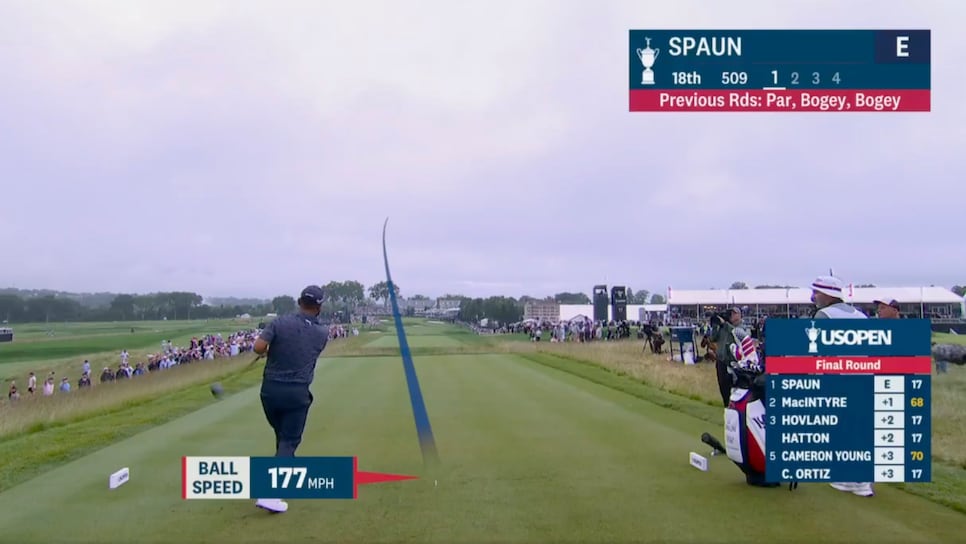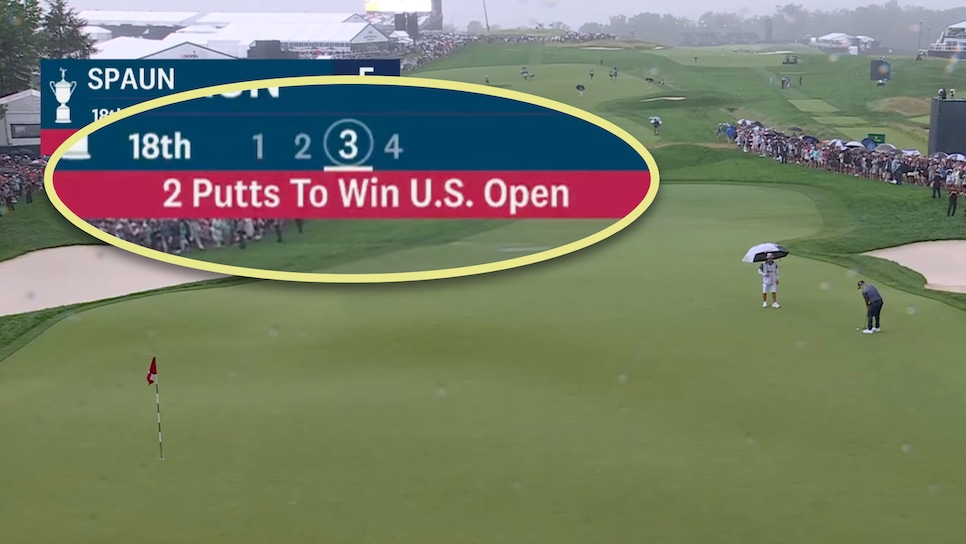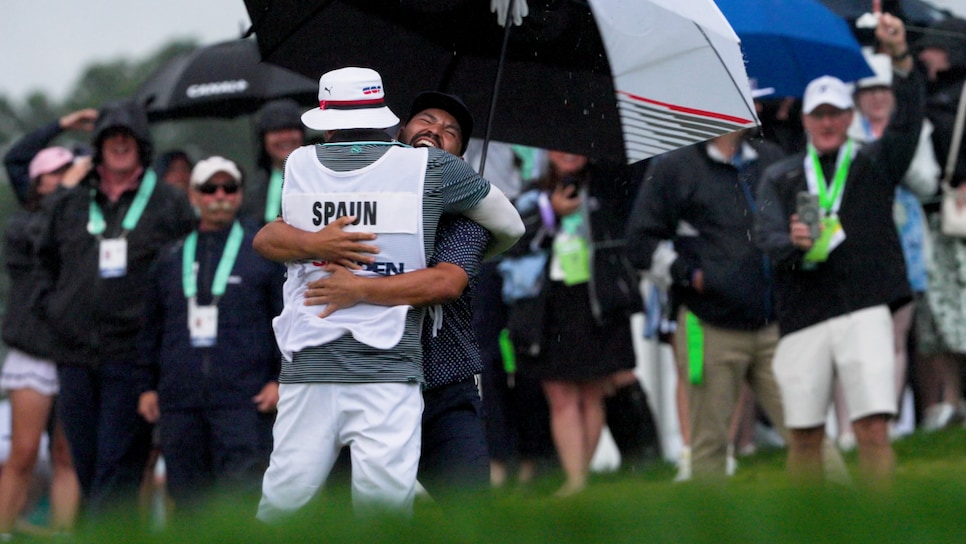I’ve always thought walk-off home runs in baseball were one of the coolest things in sports. Bang, it’s gone. No more pitches, no more drama. It’s all over and you can relax and make your way around the bases.
J.J. Spaun, an avid Dodgers fan, got a taste of that feeling on the 72nd hole of the U.S. Open.
His “walk-off” birdie putt on the final green settled the week. No more tee shots, no more putts, no more drama. It was over.
But just how incredible was the 279th shot of Spaun’s week at Oakmont?
The answer, of course, is very, very incredible. So I dove into the numbers behind the moment to shine some light on the walk-off putt that won the 2025 U.S. Open.
The heroics for Spaun came after a 90-minute weather delay on Sunday. After changing clothes and coming back out, he made birdies on 12 and 14 and then hit, what then felt like, the shot of the week on the drivable, par-4 17th. A 310-yard drive that finished just 17 feet from the hole. He two-putted for birdie and regained the solo lead for the first time since the fourth hole on Saturday.
He had one hole to play. And he led by one shot.
With the tournament on the line, he hit this tee shot.

Straight. Down. The Middle. It finished 308 yards and left him just 190 yards to one of the hardest holes in the U.S. Open rota.
As Spaun played the 18th hole, only three of the 62 players who had played the hole had made birdie.
Just like Dustin Johnson in 2016, Spaun hit a 6-iron for his approach into the 72nd hole. However, unlike DJ, who hit his approach to four feet, Spaun’s ball finished 64 feet six inches from the hole.

His approach, albeit conservative, actually lost strokes to the field. The strokes gained approach value of his approach from 190 yards was -0.08.
Before Spaun got to his ball and began to study the putt, he got a fortuitous break. Viktor Hovland, playing alongside Spaun on Sunday, had missed the fairway and hit his approach to the left side of the green also. It came to rest 66 feet from the hole, on almost the identical line.

Spaun would get to see Hovland putt before attempting to win his first major championship. Worth noting, in eight previous major appearances, he had never finished in the top 20.
Hovland went first, narrowly missing the hole and coming to rest five feet beyond the hole. Now, it was Spaun’s turn.
The putt was 64 feet six inches. He had two putts to win. The probability of a PGA Tour two-putting from that distance is around 85 percent. Whilst those odds don’t factor in the pressure of the 72nd hole at a U.S. Open, the odds were certainly in his favor.
However, the probability that a pro would three-putt from that range is almost six times higher (12 percent) than the chances of them holing (two percent).
Consider this, Denny McCarthy, arguably the best putter on the PGA Tour for the last decade, ranking inside the top five in strokes gained putting five of the last six seasons, three-putted the 18th green on Sunday, from just 34 feet.
RELATED: Putter CEO celebrates Spaun landmark win

As Spaun looked over his putt, the graphic displayed on the broadcast told the story: “Two putts to win the U.S. Open”
Spaun hadn’t three-putted once over the weekend. His last three-putt came on the 15th green of Friday’s second round.
“He doesn’t need to make it. Two putts,” said Dan Hicks on NBC, as Spaun sent his putt rolling across the green.
“HOW. ABOUT. ONE?!”

That was Hick’s call as Spaun’s ball disappeared into the hole. He had won the U.S. Open. A walk-off, 64-foot birdie putt on the 72nd hole.
It was the longest putt holed on the 18th green all week. Tyrrell Hatton had holed a 52-foot par putt on 18 in round two, but even he could only watch on as Spaun sent the Oakmont crowd into pandemonium.

Amazingly, Spaun hadn’t holed a putt longer than 35 feet all season on the PGA Tour. Spaun has played nearly 1,000 holes on Tour in 2025 (972) and this was his first made putt over 35 feet. And it was nearly double that length.
To put it in context, Spaun’s birdie putt gained +1.24 shots on the field. Sam Burns leads the PGA Tour in strokes gained putting in 2025, gaining +1.03 shots per round. In fact, only one player since 2004, has gained on average more than one shot per round on the greens (Jason Day in 2016). Spaun did better than that, with one stroke.
Gaining over a stroke on the field in one shot is extremely rare. Consider how incredible Bryson’s bunker shot on the 72nd hole was at Pinehurst last year. It gained +0.94 shots.
It seems the U.S. Open is getting used to drama on the 72nd hole. This year, it was a walk-off.
This article was originally published on golfdigest.com

